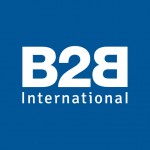Sealed Air is a leading global provider of innovative packaging and hygiene solutions. B2B International’s Cristin Diaz recently interviewed Sealed Air’s Dale Grinstead to discuss the company’s success in hygiene solutions.
Cristin Diaz: Let’s start off talking about how the market for hygiene has changed over the years.
Dale Grinstead: This might sound a bit strange, but I think simple hygiene is the most important medical achievement in the past 200 years. It has saved more lives than any antibiotic ever developed.
I also think the most important component of hygiene is not disinfecting or sanitation; it’s just good old fashioned cleaning with soap and water. I have almost never seen a microbiology problem be a result of failure in the anti-microbial agents (sanitizers and disinfectants) themselves. Inevitably it is a failure of the actual cleaning process. At the end of the day, I tell people that want to control unwanted microorganisms to clean a lot and sanitize a little.
Diaz: So how do you differentiate your offering if hygiene is more about process than product?
Grinstead: What is driving the cleaning industry today is the realization that we’re not going to struggle and try to differentiate ourselves based on chemistry. There are few opportunities in that area. Instead, we are going to differentiate ourselves with everything that surrounds and supports chemistry.
So, we advise our customers on how to create hygiene standards and sanitation operating procedures that help them resolve hygiene problems. We spend a lot of time and effort manipulating the micro-ecology of facilities, food, and orgasms. We make sure our chemicals look and smell nice, but really we spend substantial time on making our customers’ environments cleaner. We do it for food safety, infection control, food shelf life, reduced food waste, odor control, and preserving lives.
We differentiate through our training programs and audit programs. We differentiate through data collection and analysis, and through improvement of the sanitation process. Whether it’s a cleaner, disinfectant, or sanitizer, if it’s not being used properly or at all then this relates to a process failure; it’s not the chemical that failed. It’s in the process and practice component where a lot of our innovation comes. So. the focus then becomes how we make the cleaning process easier.
Diaz: What do you think is at the heart of your success?
Grinstead: I think that the global nature of our company is relatively unique. There is only one other company that is truly global.
Additionally, we are deeply integrated within the food chain in particular. You can see our impact all the way through the supply chain from distribution centers through to food services through to retail. When Sealed Air bought Diversey Care, it made us much stronger because now we have a more complete set of solutions, particularly around food safety.
If we have a customer that has a problem, we have an amazingly large suite of potential solutions to solve it. Our breadth of background and broad portfolio gives us an advantage, particularly within R&D. We have people who will come at problems from different angles and will offer unique and innovative solutions.
Another trend is data acquisition and monitoring; for example, helping a company measure cleaning procedures and whether these practices are being performed properly. There is a focus on understanding how we should analyze this kind of data and turn it into action.
Diaz: You recently partnered with B2B International to explore and test a concept for a new cleaning solution. Why did you need market research for this?

Grinstead: People don’t readily change hygiene practices, particularly on the food side. There is a general understanding among our customers that if they screw up on hygiene, it could result in somebody getting sick or dying. One of the things we constantly get pushback on in R&D is that “customers will never accept that”. Even if we have anecdotal data that suggests that customers would, it’s always good to have data and customer opinion.
In our corporate R&D program, we have to sell internally as well – particularly to our marketing colleagues who are the most conservative because they tend to express the voice of our customers. So, we needed data on the concept to convince our business colleagues that it is a viable solution.
Diaz: What advice would you give other companies considering market research to explore and test a new concept?
Grinstead: My biggest advice is to do research as early as possible in a project. I was very gratified that the research came out the way it did. I was holding my breath because it could have easily gone the other way with customers not accepting the solution (in which case, I would have wasted a year and a half on my research!)

Voice of the customer research early on will shape the entirety of your project. That’s how you begin to identify key customers’ requirements and build your house of quality. If you don’t have that early on, you run a serious risk of coming up with a great new idea that nobody will buy.
Read more about product development:
Using Market Research For Product Development Getting Concept Testing Right Product Development: What You Want, Baby I Got It


